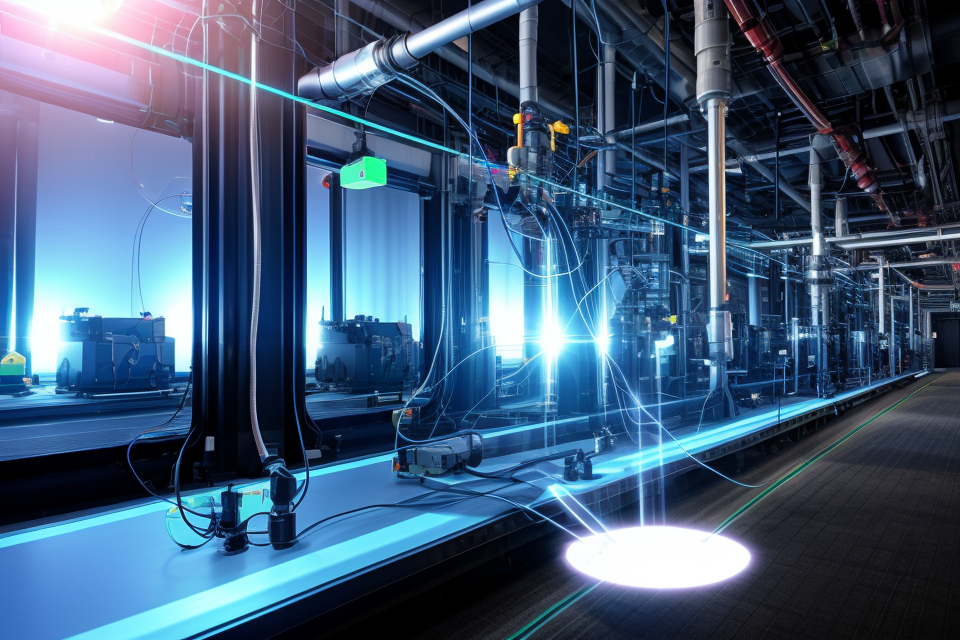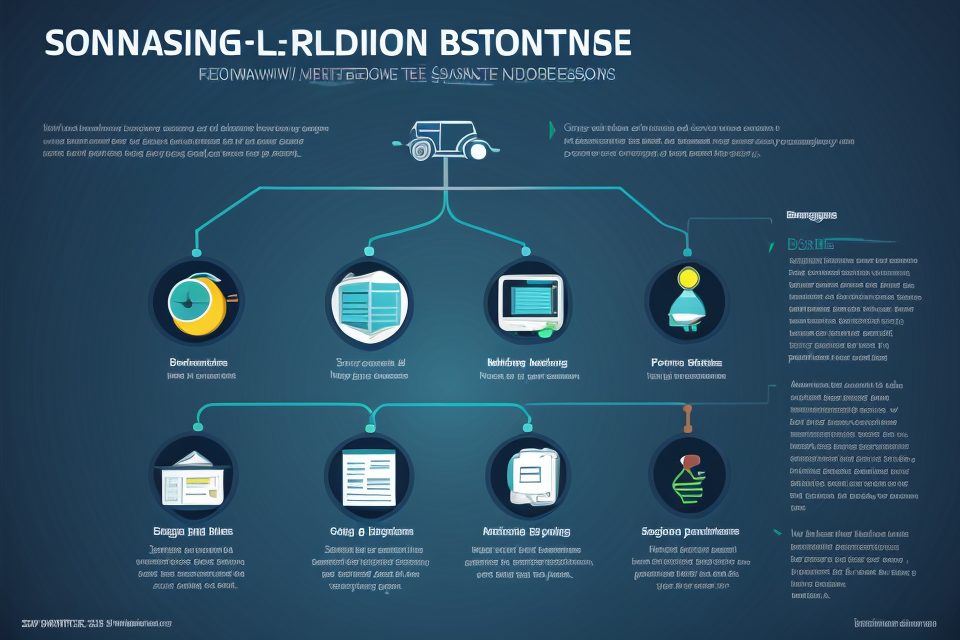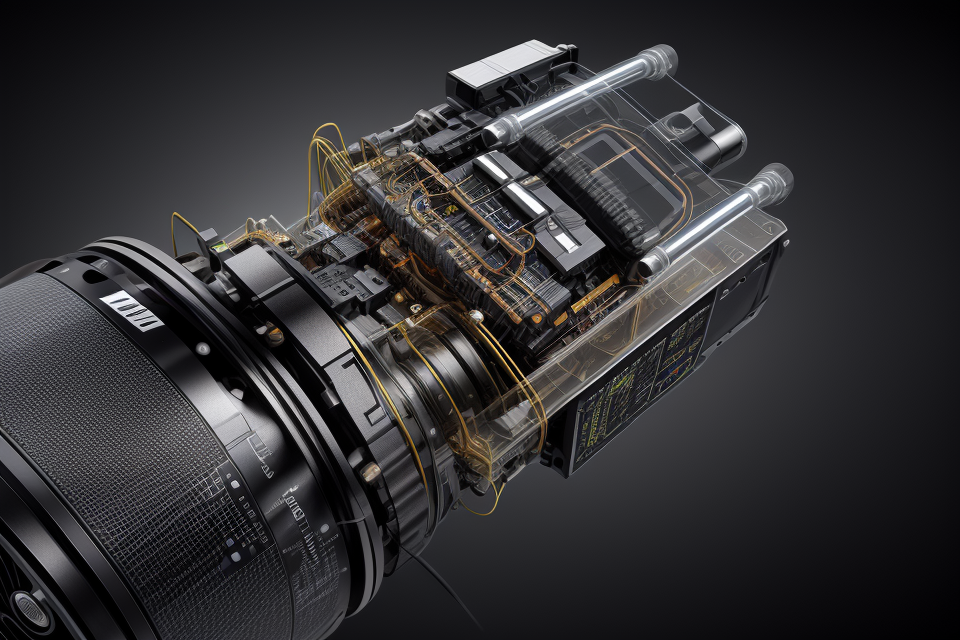
Sensor technology is an integral part of our daily lives, from the moment we wake up until we go to bed. From the alarm clock that wakes us up in the morning to the smart home devices that turn off the lights at night, sensors are everywhere. But what exactly is sensor technology, and how does it work?
In simple terms, a sensor is a device that detects and responds to physical changes in its environment. These changes can include light, heat, sound, pressure, and motion, among others. Sensors convert these physical changes into electrical signals that can be processed by other devices, such as computers or smartphones.
The technology behind sensors is constantly evolving, with new materials and designs being developed all the time. This has led to a wide range of applications for sensors, from healthcare and fitness to automated doors and industrial automation.
Whether you’re a tech enthusiast or just curious about the world around you, understanding sensor technology is an essential part of our modern world. So let’s dive in and explore the fascinating world of sensors!
Sensor technology refers to the use of sensors to detect and measure physical changes in the environment. Sensors are devices that convert physical stimuli, such as light, heat, pressure, or motion, into electrical signals that can be measured and analyzed. Sensor technology is used in a wide range of applications, including automated doors, temperature control systems, and medical devices. The basic principle behind sensor technology is that each type of sensor is designed to detect a specific physical phenomenon, and the output of the sensor is proportional to the strength of the physical stimulus. Sensors are often used in conjunction with other devices, such as microcontrollers and actuators, to create automated systems that can respond to changes in the environment. Overall, sensor technology has revolutionized the way we interact with the world around us and has enabled the development of many advanced technologies.
Understanding Sensor Technology
What is a Sensor?
A sensor is a device that detects and responds to physical inputs, such as light, heat, motion, and pressure. It converts these inputs into electrical signals that can be measured and analyzed by other devices or systems.
There are many different types of sensors, each designed to detect specific types of physical inputs. Some common types of sensors include:
- Temperature sensors, which measure the temperature of their surroundings
- Light sensors, which detect and measure the intensity of light
- Pressure sensors, which measure the pressure of fluids or gases
- Motion sensors, which detect movement or vibration
- Proximity sensors, which detect nearby objects without any direct contact
- Gas sensors, which detect the presence of gases in the air
- Humidity sensors, which measure the moisture content of the air
- Optical sensors, which detect and measure light at specific wavelengths
- Magnetic sensors, which detect magnetic fields and can be used for navigation or orientation.
How Sensors Work
Sensors are devices that detect and respond to physical inputs from the environment. They convert these inputs into electrical signals that can be processed by electronic systems. To understand how sensors work, it is essential to know the principles of sensor operation and the various types of sensors and their functioning.
Principles of Sensor Operation
The basic principle of sensor operation involves converting a physical quantity into an electrical signal. This is achieved by measuring the physical quantity’s effects on a physical parameter such as resistance, capacitance, or inductance. The sensor then converts these changes in the physical parameters into an electrical signal that can be interpreted by a processor or computer.
Various Sensor Types and Their Functioning
There are various types of sensors, each designed to detect different physical quantities. Some of the most common types of sensors include:
Temperature Sensors
Temperature sensors are used to measure the temperature of a system or environment. They work by measuring the changes in resistance of a material with temperature changes. Thermistors are a common type of temperature sensor that uses this principle to convert temperature changes into electrical signals.
Pressure Sensors
Pressure sensors are used to measure the pressure of a system or environment. They work by measuring the changes in resistance of a material with pressure changes. Pressure transducers are a common type of pressure sensor that uses this principle to convert pressure changes into electrical signals.
Optical Sensors
Optical sensors are used to detect and measure light. They work by converting light into electrical signals that can be processed by electronic systems. Photodiodes and phototransistors are common types of optical sensors.
Position Sensors
Position sensors are used to measure the position or movement of an object. They work by measuring changes in the resistance or capacitance of a material with position changes. Potentiometers and LDRs are common types of position sensors.
Chemical Sensors
Chemical sensors are used to detect and measure chemicals in a system or environment. They work by measuring changes in the resistance or capacitance of a material with chemical changes. Gas sensors and pH sensors are common types of chemical sensors.
In conclusion, sensors are devices that detect and respond to physical inputs from the environment. They convert these inputs into electrical signals that can be processed by electronic systems. Understanding the principles of sensor operation and the various types of sensors and their functioning is essential for designing and implementing effective sensor systems.
Sensor Applications
Sensor technology has a wide range of applications across various industries. In this section, we will explore the different types of sensor applications in industrial, consumer, and healthcare sectors.
Industrial Sensor Applications
Industrial sensor applications are used in manufacturing processes to improve efficiency and productivity. Some of the common industrial sensor applications include:
- Temperature sensors: These sensors are used to measure the temperature of a process or product. They help to ensure that the product is manufactured within the required temperature range.
- Pressure sensors: Pressure sensors are used to measure the pressure of a fluid or gas. They help to ensure that the process is operating within the required pressure range.
- Flow sensors: Flow sensors are used to measure the flow rate of a fluid or gas. They help to ensure that the process is operating within the required flow rate range.
- Level sensors: Level sensors are used to measure the level of a liquid or solid. They help to ensure that the process is operating within the required level range.
Consumer Sensor Applications
Consumer sensor applications are used in everyday devices to make them more convenient and user-friendly. Some of the common consumer sensor applications include:
- Motion sensors: Motion sensors are used in security systems, lighting systems, and other devices to detect movement. They help to automate processes and make them more convenient.
- Proximity sensors: Proximity sensors are used in mobile phones, door locks, and other devices to detect nearby objects. They help to make devices more user-friendly and convenient.
- Touch sensors: Touch sensors are used in smartphones, tablets, and other devices to detect touch input. They help to make devices more user-friendly and convenient.
- Light sensors: Light sensors are used in cameras, smartphones, and other devices to measure the intensity of light. They help to adjust the brightness and contrast of images.
Healthcare Sensor Applications
Healthcare sensor applications are used to improve patient care and healthcare outcomes. Some of the common healthcare sensor applications include:
- Vital signs sensors: Vital signs sensors are used to measure the vital signs of a patient, such as heart rate, blood pressure, and temperature. They help to monitor the health of a patient and detect any abnormalities.
- Sleep sensors: Sleep sensors are used to monitor the sleep patterns of a patient. They help to diagnose sleep disorders and improve the quality of sleep.
- Glucose sensors: Glucose sensors are used to measure the level of glucose in the blood of a patient. They help to monitor the health of a patient with diabetes and adjust their treatment plan.
- MRI sensors: MRI sensors are used to measure the magnetic properties of a patient’s body during an MRI scan. They help to create detailed images of the body and diagnose medical conditions.
Overall, sensor technology has a wide range of applications across various industries, from manufacturing to healthcare. These applications help to improve efficiency, productivity, and healthcare outcomes, making them an essential part of modern technology.
Components of Sensor Technology
Materials Used in Sensor Construction
Selecting the appropriate materials for sensor construction is crucial for achieving desired performance and functionality. Material selection criteria depend on the specific application requirements and the properties required from the sensors.
Common materials used in sensor manufacturing include:
- Metals: metals such as aluminum, copper, and steel are used in sensor construction due to their high conductivity, durability, and stability.
- Ceramics: ceramic materials such as silicon, alumina, and zirconia are used in sensor construction due to their high thermal stability, resistance to corrosion, and biocompatibility.
- Polymers: polymer materials such as polyimide, polyester, and silicone are used in sensor construction due to their flexibility, durability, and ease of processing.
- Composites: composite materials made from combinations of metals, ceramics, and polymers are used in sensor construction to achieve specific properties such as high temperature resistance, corrosion resistance, and wear resistance.
In addition to the material selection criteria, the fabrication process and the required sensor dimensions also play a crucial role in determining the suitability of the materials used in sensor construction. The materials used in sensor construction must be compatible with the fabrication process, and the dimensions of the sensor must be precisely controlled to achieve the desired performance.
In summary, the selection of materials for sensor construction is a critical step in achieving the desired performance and functionality of the sensors. The choice of materials depends on the specific application requirements and the properties required from the sensors.
Design Considerations
Sensor technology relies heavily on the design of the sensors themselves. There are several key factors that must be considered during the design process in order to ensure that the sensor is effective and reliable. These factors include:
- Sensor Design Factors: The design of a sensor must take into account a number of factors, including the type of physical quantity being measured, the environment in which the sensor will be used, and the required level of accuracy and precision. For example, a temperature sensor designed for use in a laboratory setting may have different requirements than a temperature sensor designed for use in a manufacturing facility.
- Design Process for Sensor Development: The design process for sensor development typically involves several steps, including conceptual design, detailed design, prototyping, and testing. During the conceptual design phase, the basic concept and requirements for the sensor are established. In the detailed design phase, the sensor’s specific components and features are defined. Prototyping involves creating a physical version of the sensor, which is then tested to ensure that it meets the required specifications.
Overall, the design of a sensor is a critical factor in determining its effectiveness and reliability. By carefully considering the various design factors and following a structured design process, sensor technology can be developed to meet the needs of a wide range of applications.
Integration with Other Technologies
Sensor technology has the capability to integrate with other advanced technologies such as the Internet of Things (IoT) and Artificial Intelligence (AI). This integration allows for enhanced functionality and increased efficiency in various industries.
Integration with IoT
The Internet of Things (IoT) is a network of interconnected devices that can collect and exchange data. The integration of sensor technology with IoT allows for the collection of real-time data from various sources. This data can be used to improve processes, increase efficiency, and make informed decisions.
For example, in the healthcare industry, sensor technology integrated with IoT can be used to monitor patient vital signs remotely. This data can be transmitted to healthcare professionals in real-time, allowing for early detection of potential health issues and quick response times.
Integration with AI
Artificial Intelligence (AI) is a field of computer science that focuses on the development of intelligent machines that can work and learn like humans. The integration of sensor technology with AI allows for the creation of intelligent systems that can process and analyze data collected by sensors.
For example, in the manufacturing industry, sensor technology integrated with AI can be used to predict machine failures before they occur. This can help to reduce downtime and increase productivity. Additionally, AI can be used to analyze data collected by sensors to identify patterns and make predictions about future events.
Overall, the integration of sensor technology with other advanced technologies such as IoT and AI has the potential to revolutionize various industries and improve efficiency and productivity.
Advantages and Challenges of Sensor Technology
Benefits of Sensor Technology
Sensor technology has revolutionized the way we live and work by providing real-time data that helps us make informed decisions. Some of the benefits of sensor technology include:
- Increased Efficiency: Sensor technology can automate processes, allowing for greater efficiency and productivity. For example, in manufacturing, sensors can monitor the production line and adjust machinery to optimize output. In transportation, sensors can optimize routes and reduce fuel consumption.
- Enhanced Safety: Sensors can detect potential hazards and alert users to take action. For example, smoke detectors can alert occupants to a fire, while sensors in vehicles can detect potential collisions and provide warning signals.
- Improved Accuracy: Sensor technology can provide accurate and reliable data, which can be used to make informed decisions. For example, in medical applications, sensors can monitor vital signs and provide real-time data to healthcare professionals. In agriculture, sensors can monitor soil moisture levels and provide data on crop health.
Overall, the benefits of sensor technology are vast and varied, making it an essential tool in many industries.
Challenges of Sensor Technology
Data Security and Privacy Concerns
Sensor technology relies on the collection and transmission of vast amounts of data, which raises concerns about data security and privacy. The sensitive nature of the data collected by sensors, such as personal health information or financial data, makes it vulnerable to cyber-attacks and data breaches. As a result, it is essential to implement robust security measures to protect the data from unauthorized access and ensure the privacy of the individuals involved.
Environmental Impact
The widespread use of sensor technology has led to concerns about its environmental impact. The production, deployment, and disposal of sensors require significant resources, including energy and raw materials. Moreover, the accumulation of sensor devices in the environment can have a negative impact on wildlife and ecosystems. Therefore, it is crucial to consider the environmental implications of sensor technology and adopt sustainable practices in its development and deployment.
Interoperability Issues
Sensor technology relies on the integration of different devices and systems, which can pose interoperability challenges. The lack of standardization and compatibility between different sensor devices and platforms can lead to integration issues and limit the scalability and effectiveness of sensor networks. To address these challenges, it is essential to establish industry standards and promote the development of open platforms that support seamless interoperability between different sensor devices and systems.
The Future of Sensor Technology
Emerging Trends in Sensor Technology
Sensor technology is a rapidly evolving field that promises to transform our lives in countless ways. In this section, we will explore some of the emerging trends in sensor technology that are poised to shape the future.
Advancements in Materials Science
One of the most significant trends in sensor technology is the development of new materials with superior sensing capabilities. Scientists are exploring new materials such as graphene, which is a single layer of carbon atoms arranged in a hexagonal lattice. Graphene is an excellent conductor of electricity and has extraordinary sensitivity to changes in its environment, making it an ideal material for sensors. Other materials such as polymers, metamaterials, and nanomaterials are also being explored for their potential in sensor technology.
New Sensor Types and Applications
Another trend in sensor technology is the development of new sensor types that can be used in a wide range of applications. For example, the development of flexible and wearable sensors is opening up new possibilities for healthcare, sports, and fitness applications. These sensors can be worn on the body and can monitor vital signs, activity levels, and other metrics, providing real-time feedback to users. In addition, the development of sensor networks is enabling new applications in fields such as agriculture, environmental monitoring, and smart cities.
Furthermore, the integration of artificial intelligence (AI) and machine learning (ML) algorithms with sensor technology is allowing for more sophisticated data analysis and prediction. This is enabling new applications such as predictive maintenance, where sensors can detect patterns in machine behavior and predict when maintenance is needed, reducing downtime and improving efficiency.
Overall, the future of sensor technology looks bright, with many exciting developments on the horizon. As these trends continue to evolve, we can expect to see sensor technology playing an increasingly important role in our lives, transforming industries and creating new opportunities for innovation.
Potential Impact on Society
Implications for Industries
Sensor technology has the potential to revolutionize various industries, including healthcare, agriculture, transportation, and manufacturing. In healthcare, sensors can be used to monitor vital signs, detect diseases, and assist in surgical procedures. In agriculture, sensors can be used to optimize crop growth, reduce waste, and conserve resources. In transportation, sensors can be used to improve traffic flow, enhance safety, and reduce emissions. In manufacturing, sensors can be used to improve product quality, increase efficiency, and reduce downtime.
Implications for Everyday Life
Sensor technology also has the potential to impact everyday life in various ways. For example, sensors can be used to monitor the environment, such as air quality and noise levels, and provide real-time information to individuals. They can also be used in personal devices, such as smartphones and wearables, to track fitness, monitor sleep, and provide health insights. Additionally, sensors can be used in smart homes to automate tasks, such as turning off lights and adjusting the thermostat, and improve security. Overall, sensor technology has the potential to improve the quality of life for individuals and contribute to the growth of various industries.
Ethical Considerations
Responsible Development and Deployment
As sensor technology continues to advance and become more widespread, it is essential to consider the ethical implications of its development and deployment. One key aspect of this is ensuring responsible development and deployment. This means taking into account the potential impacts of sensor technology on society, the environment, and individuals, and ensuring that these impacts are minimized as much as possible.
Ensuring Fairness and Inclusivity
Another important ethical consideration is ensuring fairness and inclusivity in the development and deployment of sensor technology. This means ensuring that the benefits of sensor technology are distributed equitably across society, and that no group is disproportionately impacted by its use. Additionally, it is important to consider the potential biases that may be introduced by sensor technology, and to take steps to mitigate these biases.
Overall, the future of sensor technology holds great promise, but it is crucial that we approach its development and deployment with a focus on ethical considerations to ensure that it benefits society as a whole.
FAQs
1. What is sensor technology?
Sensor technology refers to the use of sensors to detect and measure physical changes in the environment, such as temperature, light, sound, and motion. Sensors are devices that convert physical parameters into electrical signals, which can then be processed and analyzed by computers or other electronic devices.
2. How does sensor technology work?
Sensor technology works by using sensors to detect physical changes in the environment and convert them into electrical signals. These signals are then processed and analyzed by computers or other electronic devices to provide information about the physical parameters being measured. For example, a temperature sensor might measure the temperature of the air around it and send an electrical signal to a computer, which could then display the temperature on a screen.
3. What are some common types of sensors?
There are many different types of sensors, including temperature sensors, light sensors, sound sensors, motion sensors, and pressure sensors. Each type of sensor is designed to measure a specific physical parameter, and they can be used in a wide range of applications, from simple home automation systems to complex industrial processes.
4. How are sensors used in technology?
Sensors are used in a wide range of technology applications, including consumer electronics, industrial automation, and medical devices. They can be used to monitor and control various processes, such as temperature, humidity, and pressure, and they can also be used to gather data for analysis and decision-making. For example, sensors might be used in a smart home system to control the lighting and temperature, or in a medical device to monitor a patient’s vital signs.
5. What are some potential benefits of sensor technology?
Sensor technology has the potential to provide many benefits, including increased efficiency, improved safety, and enhanced data collection and analysis. By using sensors to monitor and control various processes, businesses and individuals can reduce waste, improve safety, and make more informed decisions based on data. Additionally, sensor technology can enable new types of applications and services, such as predictive maintenance and remote monitoring.


